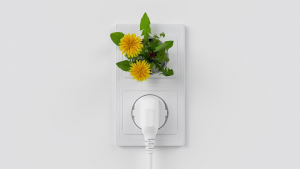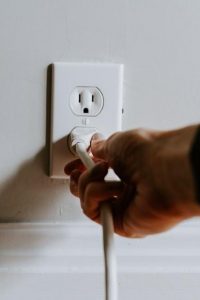When it comes to a hospital, there are many aspects one has to consider to ensure a secure and protected environment for the patients and the staff. The hospital has to abide by various guidelines and regulations to avoid safety hazards or any sort of casualty. Hence, even for power cords used in the hospital premises, certain specifications have to be met.
Hospitals require a handful of power resources for a lot of operations, including laboratory and routine work. Therefore, it demands a massive number of power cords. At the same time, it is to be ensured that these cords are built durable and pose no threat of potential hazards. The guidelines on power cords direct the hospital to use special hospital-grade power cords.
Hospital-grade power cords are specially designed to sustain the daily wear and tear use in hospitals. Keep reading ahead to learn more about these power cords and their use.

What are hospital-grade power cords?
Hospital-grade cables are specially designed to have good grounding capacity and to be durable. A hospital grade power cord and its sets are equipped with solid pins, large plug bodies that help virtually eliminate the risk of shock through touch, and they can also stand up to greater pull forces.
Before it is employed for use, hospital-grade cords go through the following tests:
- Insulation resistance
- Dielectric Voltage-Withstand test
- Cord flexing test
- Test for durability against pull forces
- Strain relief test
- Temperature test
- Impact resistance
- Accelerated aging test
What are the standards for a hospital-grade cord?
The guidelines and safety regulations concerning the use of hospital-grade cords have four different standards outlined in them. They are explained below:
- The first standard states that the blades in the cord must be solid and not folded brass.
- The second one says that the blades should be nickel-plated.
- The third states that the plug needs to have an internal strain relief set up to prevent stress to the connections.
- The fourth one states that the plug and the receptacle must be marked with a green dot labeled “hospital-grade.”
There are no mandated specifications outlined for the color or plug material of the cord, but some standard features are found in it. These hospital-grade power cords are also more prominent compared to standard plugs. The cables can also come with a clear plug, but it is not required.
The clear plugs are used for convenience more than any other reason. They enable the user to see the wire connection clearly and make sure everything is running correctly. The standard color of the cord is usually grey, but it is not necessarily required. These are just specific considerations mentioned in the guidelines.

What are the types of hospital-grade cords?
16 AWG Hospital Grade Power Extension Cord (NEMA 5-15P to NEMA 5-15R)
These are replacement extension cords for PCs, monitors, printers, and lab equipment specifically designed for the complex hospital environment.
16 AWG Hospital Grade Power Extension Cord (NEMA 5-15P to IEC320C13)
Another type of replacement extension cords for PCs, monitors, printers, and lab equipment which are specifically designed for the complex hospital environment
18 AWG Hospital Grade Power Cord (NEMA 5-15P to ROJ 125V)
These are also replacement extension cords for PCs, monitors, printers, and lab equipment which are specifically designed to sustain in the hospital environment
18 AWG Hospital Grade Power Cord (NEMA 5-15P to IEC320C13R)
These are right-angled replacement power cords that can be used for PCs, monitors, printers, and lab equipment, and they are specifically designed to be durable in the hospital environment.
How are hospital-grade plugs different from standard plugs?
Hospital environments are usually busy, and it demands the use of a lot of appliances which eventually causes a lot of strain on plugs. With constant plugging and unplugging of the cord and all the wear and tear involved, it could be damaged easily in a short period. This can not only lead to potential casualties but also give rise to replacement costs.
Hence, certain specific standards must be maintained to ensure minimal damage to cords, the appliances’ longevity, and safety hazards to protect the staff and patients inside the hospital premises.
Hospital-grade cords are crafted in a specific manner to make them more durable compared to the standard plugs. The most contrasting feature is the plug size. A large plug size can help in the prevention of accidental shock. Since it is tested to be resistant against bends and strains, it also makes them sustainable.
In a hospital area, usually, large amounts of volatile chemicals are found. Hence, degraded or damaged cords or wired connections can jeopardize the safety of everyone. Extra protective layers embedded also help in avoiding breakage inside the plug.

Conclusion
The regulations and standards prescribed for these power cords provide protection and ensure the optimum safety of anybody concerned with its use. These standards impart durability to the cords and eventually increase the lifespan to prevent future accidents. With thorough and careful testing, high performance and quality can be ensured to the user.
Hospital grade cords can be used in many other setups requiring similar considerations like a hospital, like laboratories or medical offices. The use of these cords is mandatory in several countries worldwide, and hence it becomes necessary to be aware of them.


















